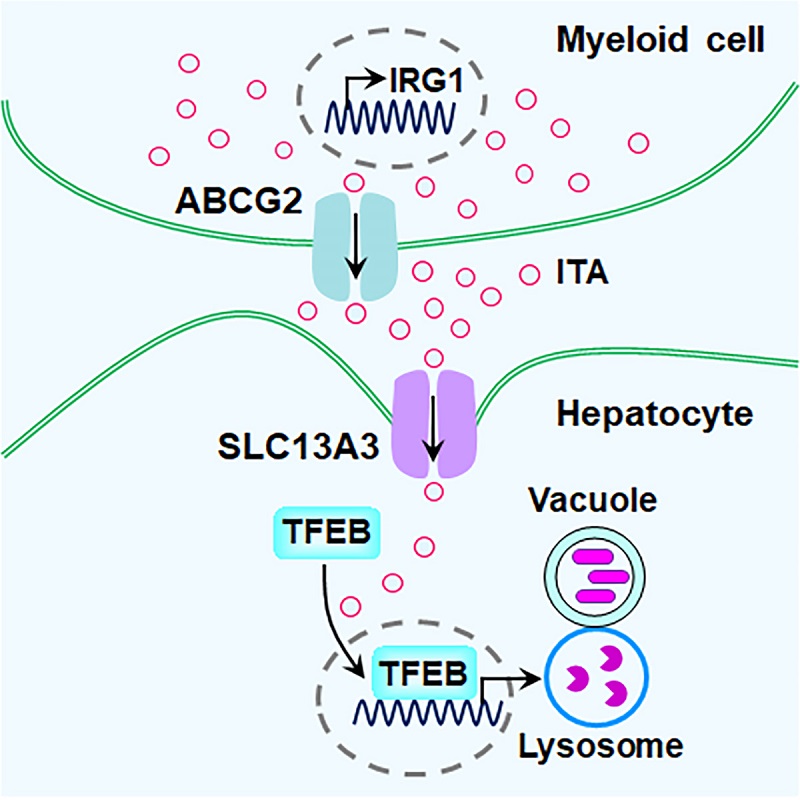
A research team led by Prof. LI Xinjian from the Institute of Biophysics, Chinese Academy of Sciences, used the itaconate fluorescent probe BioITA as a signal output tool to conduct high-throughput screening of cells expressing a gRNA library targeting membrane proteins, identifying a new itaconate membrane transporter-SLC13A3.
This study, published in Developmental Cell, identified SLC13A3 as an intracellular transporter of itaconate and revealed that SLC13A3-mediated intracellular transport of itaconate can enhance the antimicrobial innate immunity of hepatocytes.
The metabolite itaconate has anti-inflammatory and antibacterial functions, and its biosynthesis is limited to activated immune cells; however, the molecular mechanisms by which itaconate secreted by immune cells is captured by non-immune cells to exert immunoregulatory functions remain unknown.
Researchers screened the expression levels of SLC13A3 in various tissues and organs of mice, finding that SLC13A3 is highly expressed in liver tissue.
To explore the functions of SLC13A3 in the liver, they constructed liver-specific Slc13a3 knockout mice. In a mouse model of Salmonella typhimurium infection, researchers observed that the hepatocyte-specific knockout of Slc13a3 significantly weakened the mice's antimicrobial innate immunity. This effect depended on the ability of immune cells in the liver to synthesize itaconate.
Further mechanistic studies showed that SLC13A3-mediated intracellular transport of itaconate in hepatocytes induces lysosomal biogenesis by activating the transcription factor EB (TFEB), thereby enhancing the antimicrobial innate immunity of hepatocytes.

Figure 1. SLC13A3 is an itaconate importer. SLC13A3-mediated itaconate uptake improves hepatic antibacterial innate immunity by activating TFEB and inducing lysosomal biogenesis in hepatocytes (Image by LI Xinjian's group)

86-10-68597521 (day)
86-10-68597289 (night)

52 Sanlihe Rd., Xicheng District,
Beijing, China (100864)

